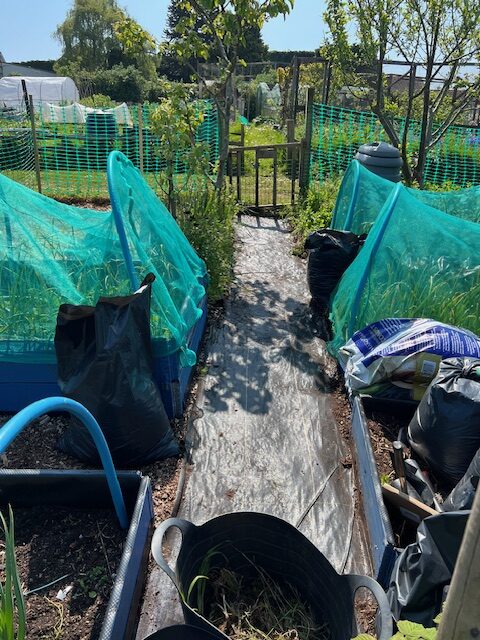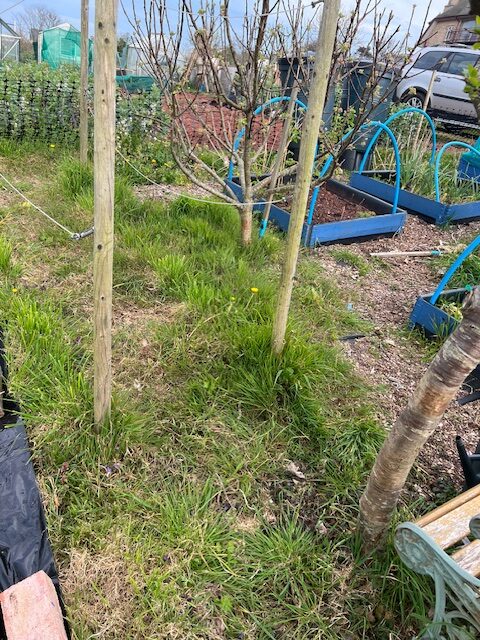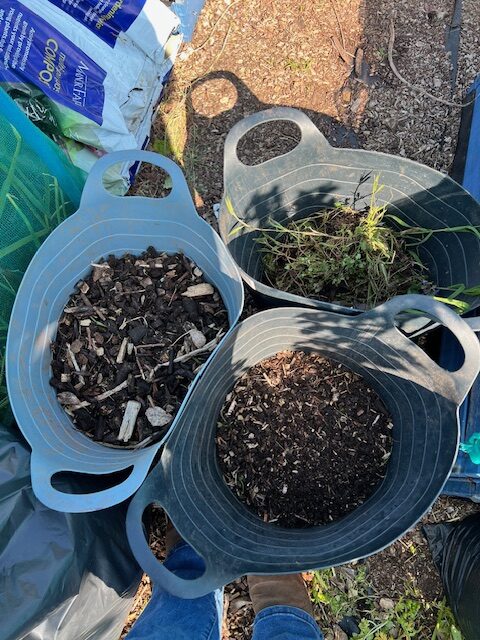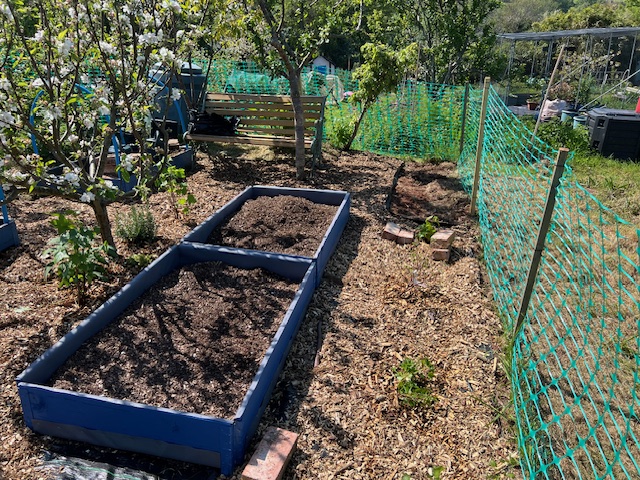This past week I’ve been trying to get my plot in order by replacing the woodchip paths. We laid these two years ago (cardboard, weed membrane, then a layer of bark chippings). On the whole, the paths have stood up well. Obviously, I don’t know about the cardboard underneath (or mind much), but the weed membrane looks like new (a long way from the disintegrating, murderous mess many allotmenteers warn about).

One lesson I’ve learned over the years is that not all weed membranes were created equal. This is one instance where it is worth investing in better quality materials. I have only had good experiences with it, but where poor quality membrane has been left and forgotten about, I can see how it would turn from a help to a major pain in the backside (membrane + rotavator = disaster).
The membrane was fine, so I left it in situ. The woodchip, on the other hand, had degraded significantly. My paths were a mess. Weed seeds had set, their roots delving down, thriving on the layer of compost that had formed underneath. I must admit, I did neglect the paths over the winter (having gotten off scot-free the year before). The weeds had caught up with me.

I sat for hours with a riddle, weeding, scooping and sieving, throwing weeds in one bucket, intact woodchip in another, and retaining lovely free compost in a third. Having finally completed this laborious task, I have ten bags of good quality compost ready to go in my raised beds – enough for top ups and to create two new beds – and all for free!

Is anyone else finding buying compost a bit of a lottery these days? I know I should make my own, but I don’t. Having been terrorised by a vole(!), the thought of enticing rats with smelly food scraps is too much for me. Besides, I have a family of slow worms (great for hoovering up slugs, snails and other nasties) living in my compost bin and I don’t have the heart to disturb them. Although the compost is still fine from Trago Mills (the go-to for many Devon gardeners), I’ve found other shop bought compost to be awful, full of coir, balled up clay, plastic, and even glass.
Having spent several hours separating the wheat from the chaff, I also have a couple of sacks of woodchip to reuse. By a stroke of luck, the allotment recently acquired a free supply of bark chippings, meaning I can replace the paths without spending a small fortune (more money for seeds!). Best of all, I have my paths looking nice and tidy again, ready for the growing season ahead, and enough free compost to fill my two new raised beds.

Rich in insect life and micro-organisms, homemade compost is proven to be more beneficial to plant growth than commercially sold (this article from Compost Magazine delves deeper), so I’m hopeful my woodchip compost counts. And maybe, just maybe, I can create a continuous free supply by reusing the spent woodchip, but only time will tell.

Leave a Reply